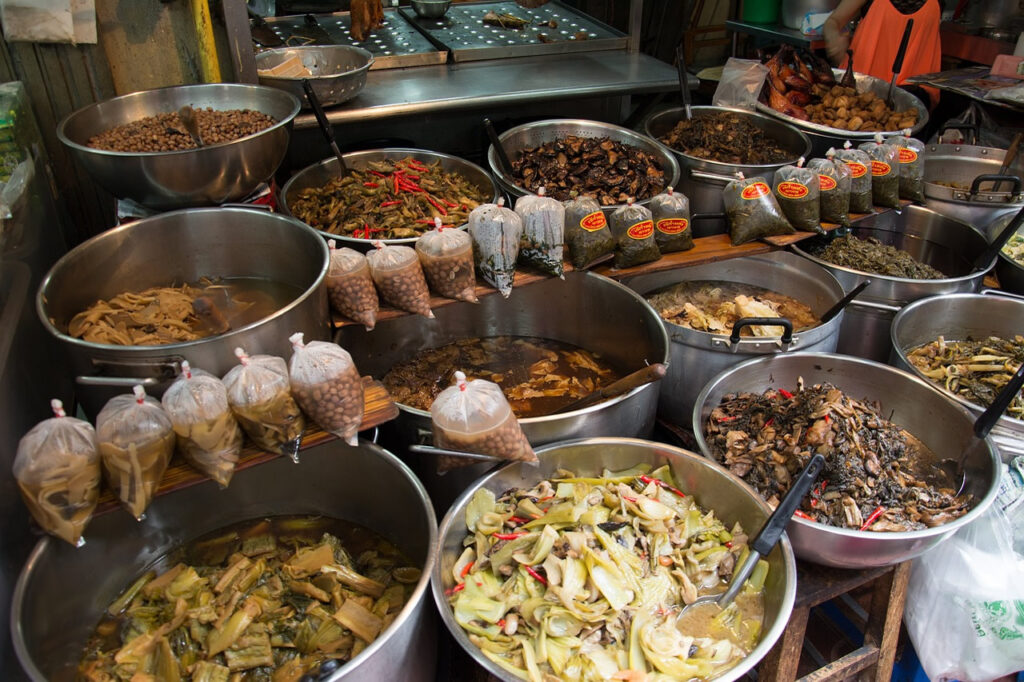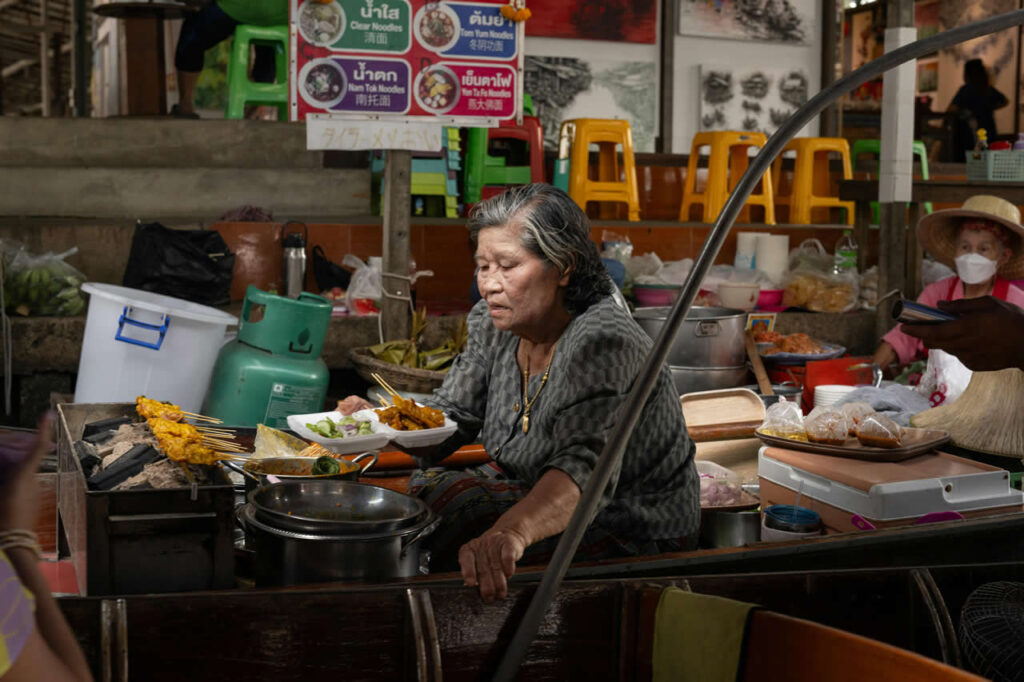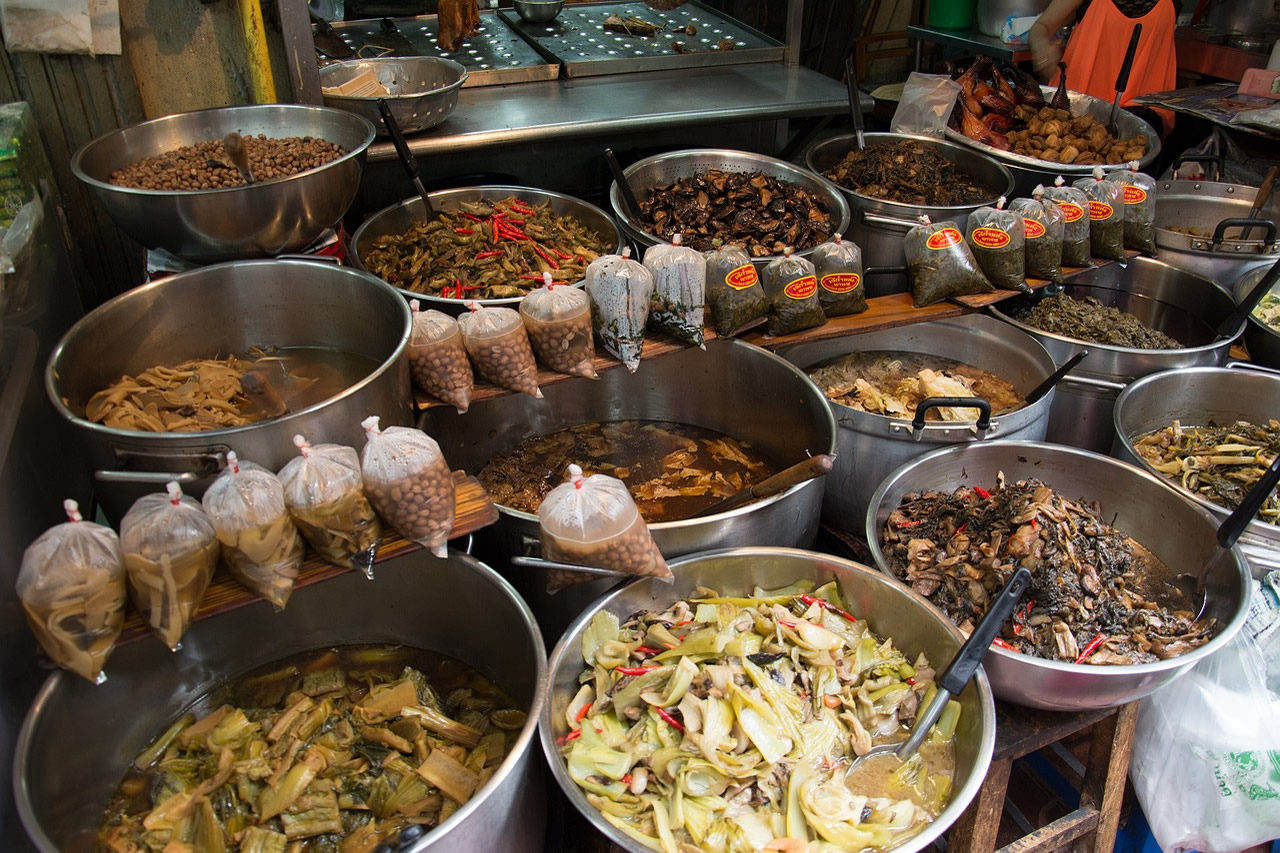
Thailand is a paradise for food lovers, and nowhere is this more visible than in its vibrant street food scene. From busy night markets to roadside stalls, Thai street food is very tasty and affordable.
The variety is practically endless, plus it’s available nearly 24/7. Indulge yourself and enjoy the pleasures of the Thai street food experience!
Why Thai Street Food is Famous
Thai street food is renowned for its variety, taste, and accessibility. The country’s tropical climate provides an abundance of fresh herbs, vegetables, and seafood, which contribute to the bold and aromatic flavors found in every dish.
Another reason Thai street food stands out is its affordability. A hearty meal from a street vendor often costs a fraction of what you’d pay in a restaurant. Locals and tourists alike appreciate the convenience of grabbing a quick, delicious bite on the go.
Where to Find the Best Street Food
- Bangkok: Yaowarat (Chinatown) is a street food haven, known for dishes like grilled seafood, Dim Sum, and Pad Thai. Ratchada Train Night Market and Chatuchak Market also offer a wide variety of local delicacies. Bangrak Food Street is perfect for those looking for authentic flavors.
- Chiang Mai: Chiang Mai Gate Market and Warorot Market are must-visits for Northern Thai specialties like Khao Soi (curry noodle soup). The Sunday Walking Street is another great spot for tasting street food while enjoying the city’s vibrant atmosphere.
- Phuket: Phuket Night Market and Malin Plaza serve Southern Thai delicacies, while Old Town’s street food stalls provide a mix of traditional and fusion dishes.
- Other Notable Locations: Hua Hin’s night market is famous for its fresh seafood, while Pattaya’s Thepprasit Market offers a mix of local and international street food. Even small towns have their own local markets where you can discover hidden culinary gems.

Must-Try Dishes
Iconic Thai Street Food Dishes
Some dishes are staples of Thai street food and should not be missed:
- Pad Thai (ผัดไทย): Stir-fried rice noodles with shrimp, tofu, egg, peanuts, and tamarind sauce, offering a perfect balance of sweet, sour, and savory flavors.
- Som Tam (ส้มตำ): Spicy green papaya salad made with lime, chili, fish sauce, and peanuts, popular for its refreshing and fiery taste.
- Tom Yum Goong (ต้มยำกุ้ง): A flavorful hot and sour shrimp soup infused with lemongrass, kaffir lime leaves, and chili.
- Mango Sticky Rice (ข้าวเหนียวมะม่วง): A sweet dessert of glutinous rice soaked in coconut milk, served with fresh mango slices.
- Click here for 5 Must-Try Traditional Thai Dishes
Other Must-Try Street Foods
If you want to venture beyond the classics, try these street food favorites:
- Khao Man Gai (ข้าวมันไก่): Thai-style Hainanese chicken rice, served with a flavorful broth and garlic-chili sauce.
- Gai Yang (ไก่ย่าง) & Moo Ping (หมูปิ้ง): Grilled chicken and pork skewers marinated in a mix of garlic, coriander, and soy sauce, typically served with sticky rice.
- Kuay Teow (ก๋วยเตี๋ยว): A variety of Thai noodle soups with different broths, meats, and seasonings.
- Sai Krok Isan (ไส้กรอกอีสาน): Northeastern Thai fermented sausage, known for its tangy, garlicky, and slightly spicy flavor.
Popular Night Markets for Street Food
If you’re unsure where to start, head to these famous night markets:
- Bangkok: Jodd Fairs, Chinatown, and Wang Lang Market.
- Chiang Mai: Chang Phuak Night Market and Ploen Ruedee Night Market.
- Phuket: Sunday Walking Street Market and Bangla Street food stalls.

“I am a big fan of Thai street food and seldom miss the opportunity for some snacks, especially on a night out with friends. It’s a great way to wind down and recharge the batteries.
The only problem is that I always want to try as many different dishes as possible but I’m already full half way through the market…”
Cleanliness of Thai Street Food
While Thai street food is delicious and widely enjoyed, concerns about hygiene and cleanliness are understandable. Fortunately, many vendors take great care in ensuring food safety:
- Fresh Ingredients: Most street food vendors purchase fresh ingredients daily from local markets to maintain quality and minimize spoilage.
- High Turnover Rate: Popular stalls experience a high turnover of food, meaning dishes are freshly prepared and served quickly, reducing the risk of contamination.
- Visible Cooking Process: Unlike restaurants where food preparation happens behind closed doors, street food stalls often have open kitchens, allowing customers to observe hygiene practices firsthand.
- Food Handling Practices: Many vendors wear gloves, use clean utensils, and have designated areas for raw and cooked foods to prevent cross-contamination.
- Choosing the Right Stall: Travelers should opt for stalls with long lines of locals, as this is a good sign of quality and cleanliness. Avoid food that has been sitting out for too long.
- Bottled Water & Cutlery: Some vendors provide clean utensils and bottled water for rinsing. Carrying your own set of utensils or disinfecting wipes can be an added precaution.

Dining Etiquette in Thailand
Understanding Thai dining etiquette will enhance your experience and show cultural respect. Here are some key points to keep in mind:
Using a Spoon and Fork Correctly
- The spoon is the primary utensil, while the fork is used to push food onto the spoon.
- Chopsticks are usually reserved for noodle dishes and are not commonly used for rice-based meals.
No Chopsticks in Rice Bowls
- Unlike in some neighboring countries, chopsticks are not traditionally used for eating rice unless it’s a Chinese-style dish like fried rice.
- In Northern and Northeastern Thailand, sticky rice is often eaten by hand, forming small balls to scoop up food.
Paying the Bill in Thailand
- The person who invites usually pays, but splitting the bill is common among younger Thais.
- In many restaurants, the bill is brought to the table but is typically paid at the counter.
- Tipping is not mandatory, but rounding up the bill or leaving small change is appreciated, especially in street food settings.
Thai street food is a must-try for anyone traveling or living in Thailand! So, whether you’re strolling through Bangkok’s Chinatown, getting Khao Soi in Chiang Mai, or treating yourself to fresh seafood in Phuket, make sure not to miss out on the local Thai street food.
What’s the most delicious Thai street food you’ve ever tried, and where did you find it? Share your favorites in the comments below!

